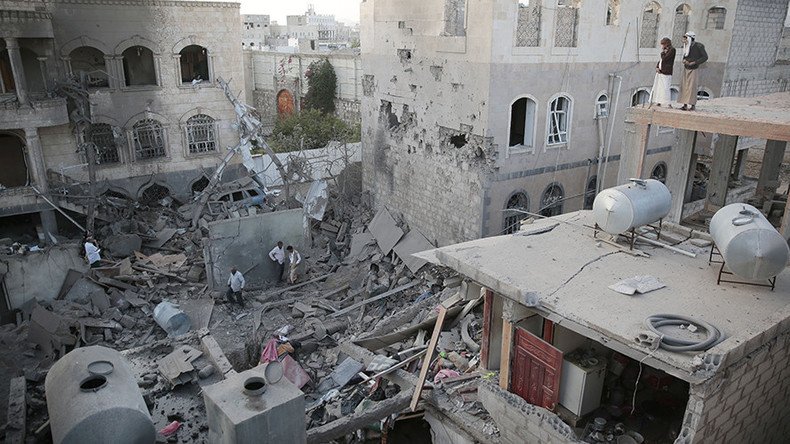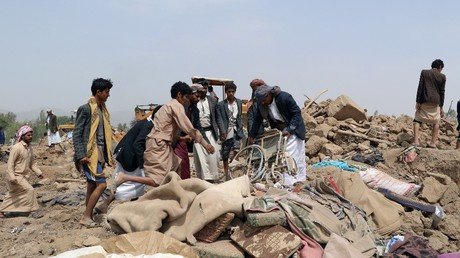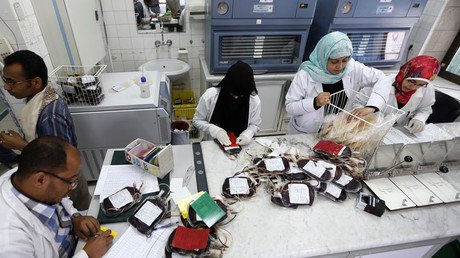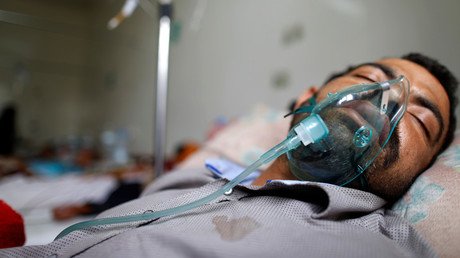Yemen hit by more airstrikes in 1st half of 2017 than in whole of 2016 – aid agencies

Yemen has been battered with more airstrikes in the first half of 2017 than the whole of 2016 according to a report compiled by several humanitarian agencies, leading to an ever-growing number of civilian casualties and refugees.
The war-torn country has been hit by a total of 5,676 airstrikes this year already, according to a report from the Protection Cluster in Yemen group released Wednesday, compared to 3,936 for all of 2016. The group is led by the United Nations High Commission for Refugees (UNHCR) and collates information from both UN as well as open sources.
The escalating violence is worsening an already serious refugee crisis which has already displaced around two million people, or over ten percent of the population. Since the start of 2017, 104,658 more people have been driven from their homes, mostly from the embattled Taizz and Sa’ada regions.
The report did not specify who was behind the airstrikes. However, the Saudi-led coalition has blockaded and dominated Yemeni airspace since it launched its air offensive in March 2015 and there have also been intermittent air and drone strikes by the United States against alleged al-Qaeda targets.
Yemen is currently being ripped apart by a civil war, which ignited over two years ago when President Abd-Rabbu Mansour Hadi was ousted by rebels from the Houthi movement. Since then, the United Nations estimates that at least 10,000 people have been killed in the conflict. Saudi Arabia and its allies entered the fray in March 2015, embarking on an aerial bombing campaign in Yemen to support the ousted leader.
Saudi-led warplanes have been repeatedly blamed by locals and humanitarian organizations, as well as the UN for striking civilian targets in Yemen. Some of the incidents have either been denied by the coalition or branded a “mistake” due to “bad intelligence.”
One of the deadliest attacks occurred at a funeral in the capital Sanaa in October 2016, when over 140 people were killed and 500 more wounded.
In March 2016, a raid on a market in northern Yemen killed 97 people. Human Rights Watch said in an October 2016 report that the Saudi-led coalition’s actions – including attacks on hospitals, markets, schools, and religious centers – could be considered as war crimes.
In 2016, the United Nations Office of the High Commissioner for Human Rights (OHCHR) claimed that out of over 4,000 civilians killed in Yemen since the start of the bombardment, “the majority” lost their lives due to “coalition airstrikes.”
The already dire situation is being further complicated by outbreaks of famine and cholera, which are indirectly adding to the death toll.
“The ongoing conflict in Yemen, compounded with cholera and pockets of famine, continues to increase the protection needs of an already vulnerable population,” reads the Protection Cluster report. “With the increasing impact of the armed conflict, a critical priority remains ensuring the protection of civilians and accountability by all state and non-state actors to comply with international humanitarian and human rights law.”
The UN and Red Cross have both pointed out that the Saudi bombing campaign and the aerial and naval blockade imposed on the country is one of the leading causes of the cholera epidemic and general humanitarian disaster in Yemen.
Seemingly ignoring the UN and Red Cross assessments, Western governments continue to supply Saudi Arabia with arms as it persists with its deadly campaign.
In his first overseas trip as US President in May, Donald Trump sealed an arms deal with Saudi Arabia worth $350 billion over the next 10 years, while UK Defense Secretary Michael Fallon has argued that his country’s arms sales to the kingdom are justified on the grounds of self-defense.
The activist group, Campaign Against Arms Trade (CAAT), estimates that the UK government approved over £3.3 billion (US$4.1 billion) of arms deals with Saudi Arabia between the start of its Yemeni campaign and February 2017. It has filed a motion against the government, but the country's High Court ruled in February 2017 that the arms sales to Saudi Arabia were well within the law.















